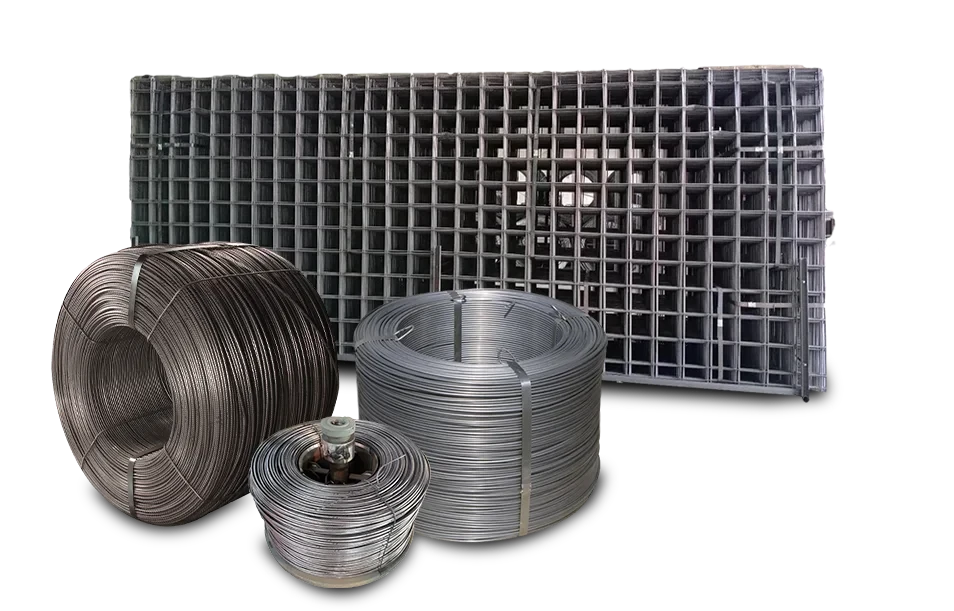Oct . 15, 2024 18:50 Back to list
Properties and Applications of Deformed Steel Reinforcing Bars in Construction
The Importance of Deformed Steel Rebar in Modern Construction
Deformed steel rebar, also known as reinforcing bar, plays a crucial role in the construction industry, particularly in the development of concrete structures. It is a steel bar or mesh of steel wires that is used to reinforce concrete and improve its tensile strength. The unique surface patterns of deformed rebar create a stronger bond with the surrounding concrete, making it an essential component in various construction projects such as buildings, bridges, tunnels, and highways.
What is Deformed Steel Rebar?
Deformed steel rebar is characterized by its ridged surface, which enhances the mechanical interlocking between the rebar and the concrete. Standard smooth rebar does not provide sufficient grip, leading to the possibility of slippage under load. The deformation on the surface of the rebar serves as an anchor, facilitating a tighter bond with the concrete and distributing loads more effectively. This technology has revolutionized the way concrete structures are designed and built, providing engineers and architects with the means to construct safer and more durable buildings.
Benefits of Using Deformed Steel Rebar
1. Increased Strength
Concrete, while strong in compression, is weak in tension. When tensile forces exceed its capacity, cracks can develop, leading to structural failure. Deformed steel rebar counteracts this weakness by providing tensile strength, thereby ensuring that the overall integrity of the structure is maintained. The combination of concrete's compressive strength and the tensile strength of deformed steel rebar results in a composite material that can withstand various loads and stresses.
2. Enhanced Bonding with Concrete
The ridged surface of deformed rebar enhances the bonding capabilities when embedded within concrete. This improved adhesion is critical in construction applications where structural stability is a priority. The effective load transfer between the rebar and concrete minimizes the risk of delamination and cracking, ultimately contributing to the longevity of the structure.
deformed steel rebar

3. Versatility in Applications
Deformed steel rebar is used in a wide range of construction applications, from residential buildings to large infrastructure projects. It is available in various grades and sizes, making it adaptable to different project requirements. Whether used in slabs, beams, columns, or precast elements, deformed rebar is essential in providing the structural support needed for lasting performance.
4. Cost-Effectiveness
Although the initial cost of deformed steel rebar may be higher than smooth rebar, its benefits far outweigh the costs in the long run. By enhancing the structural integrity and durability of concrete, deformed rebar reduces maintenance needs and extends the lifespan of the construction. This can lead to significant savings for builders and property owners over time.
Installation and Standards
The installation of deformed steel rebar must comply with specific industry standards to ensure safety and effectiveness. Various organizations, including the American Concrete Institute (ACI) and ASTM International, set guidelines for the production and use of rebar. These standards dictate not only the physical properties of the rebar, such as tensile strength and ductility, but also the methods of installation and anchorage.
Proper placement of deformed rebar is essential for optimal performance. The placement must ensure adequate coverage by concrete to protect the steel from corrosion and to maintain the overall structural integrity. Additionally, adherence to proper spacing and alignment practices is critical to achieving the intended structural benefits.
Conclusion
In conclusion, deformed steel rebar is a pivotal element in modern construction practices. Its unique design features and benefits contribute significantly to the strength, durability, and longevity of concrete structures. As the construction industry continues to evolve and demand for safer and more resilient buildings increases, the importance of deformed steel rebar cannot be overstated. Whether you are an engineer, architect, or contractor, understanding the role and advantages of deformed rebar will ultimately lead to better design decisions and successful project outcomes. With its proven effectiveness, deformed steel rebar is set to remain a cornerstone in construction for years to come.
-
High-Quality Steel Grating Solutions for Industrial Applications | Durable, Safety, Customization
NewsJul.13,2025
-
Advanced Solutions-CompanyX|Enterprise Efficiency&Cost Reduction
NewsJul.13,2025
-
Sustainable Manufacturing-EcoTech Innovations|Waste-to-Energy System&Zero Emissions
NewsJul.13,2025
-
Welded Wire Mesh- Buildings Wiremesh Co., Ltd.|Durable Construction Material&Industrial Strength Solution
NewsJul.13,2025
-
Smart Production Solutions-Example Corp|AI Automation&IoT Monitoring
NewsJul.13,2025
-
Advanced Industrial Solutions-Advanced Industrial Solutions|Manufacturing Efficiency&Productivity
NewsJul.13,2025

